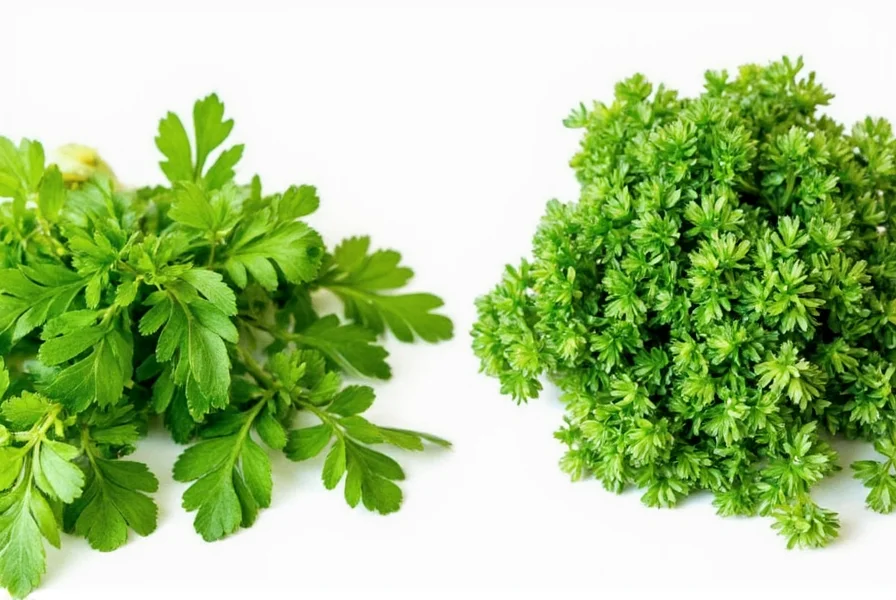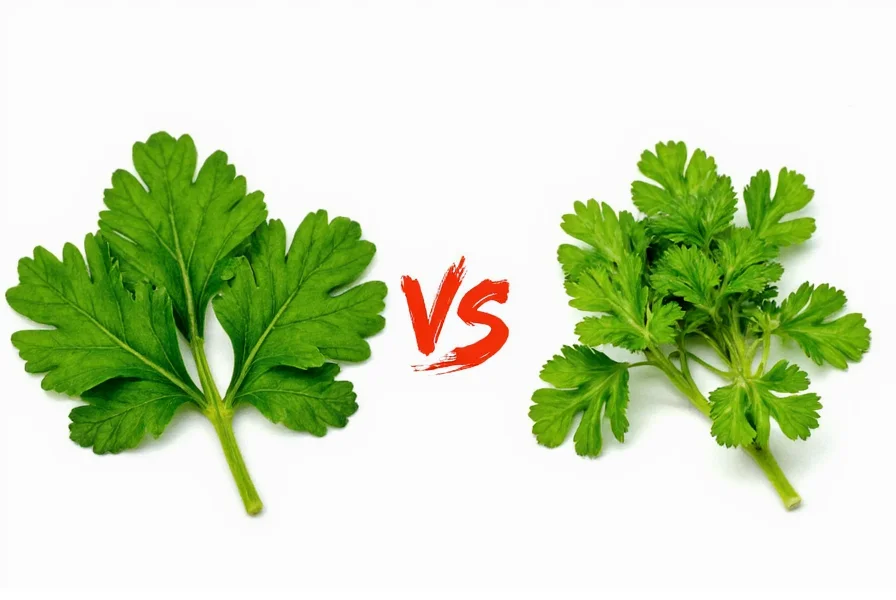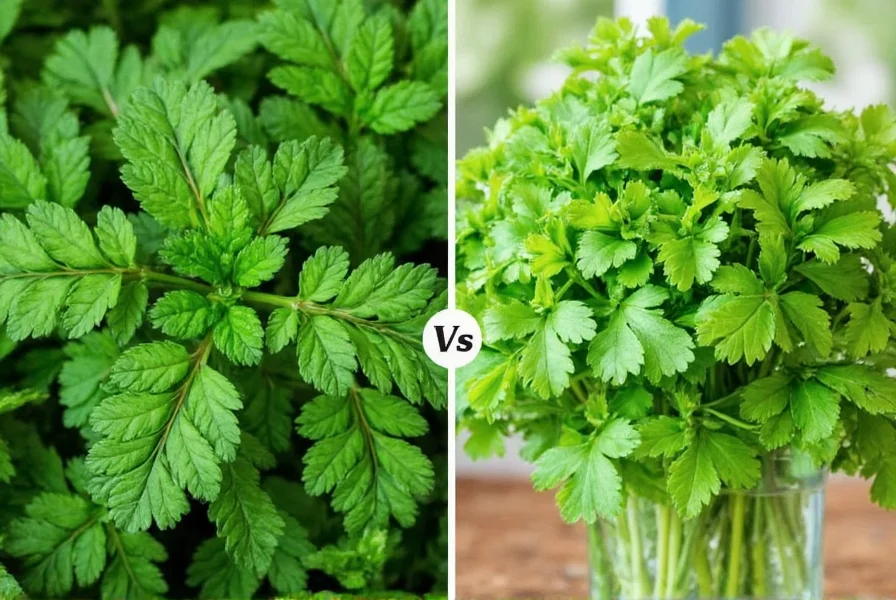Here's the direct answer: Cilantro and coriander come from the same plant (Coriandrum sativum). In American English, "cilantro" refers to the fresh leaves and stems, while "coriander" typically refers to the dried seeds. Outside North America, "coriander" often describes the entire plant including leaves. Parsley (Petroselinum crispum) is a completely different herb with distinct appearance, flavor, and culinary uses.
Understanding the difference between parsley, coriander, and cilantro is essential for home cooks and culinary enthusiasts. This confusion stems from regional naming differences and botanical realities that often trip up even experienced cooks. Let's clarify these commonly mixed-up herbs with precise botanical and culinary distinctions.
Botanical Breakdown: What's Really What
The fundamental confusion arises from linguistic differences rather than botanical ones. Coriander (Coriandrum sativum) is a single plant species with two distinct culinary components:
- Cilantro: The Spanish-derived term used in North America for the fresh leaves and stems
- Coriander seeds: The dried seeds of the same plant, used as a spice worldwide
In contrast, parsley (Petroselinum crispum) belongs to a different plant family entirely. Despite their similar leafy appearance, these are not interchangeable botanical specimens. This distinction between parsley versus coriander is critical for accurate recipe execution.
| Characteristic | Cilantro/Coriander Leaves | Parsley |
|---|---|---|
| Botanical Name | Coriandrum sativum | Petroselinum crispum |
| Leaf Shape | Roundish, lacy edges | Pointed, serrated edges |
| Stem Color | Pale green | Bright green |
| Flavor Profile | Citrusy, pungent, sometimes soapy | Grassy, mild, slightly peppery |
| Heat Tolerance | Loses flavor quickly when cooked | Holds up better to cooking |
Visual Identification Guide
Telling these herbs apart visually prevents costly kitchen mistakes. When examining fresh bunches:
Cilantro features delicate, rounded leaves with slightly ruffled edges that grow on thin, pale green stems. The leaves cluster closely together, creating a dense, almost feathery appearance. When crushed, cilantro releases a distinctive citrus aroma that some describe as soapy due to genetic taste perception differences.
Parsley has flatter, more angular leaves with pronounced serrated edges. Curly parsley forms tight, ruffled balls, while Italian (flat-leaf) parsley has broader, flatter leaves. Parsley stems are typically thicker and brighter green than cilantro's. The scent is more neutral and grassy without the citrus notes.

Culinary Applications and Substitutions
Understanding when to use cilantro versus parsley can make or break your dish. Cilantro's bright, citrusy flavor shines in fresh applications:
- Salsas and guacamole
- Thai and Vietnamese dishes
- Chutneys and fresh herb sauces
- Garnishing tacos and curries
Parsley's milder flavor works well both fresh and cooked:
- Gremolata and persillade
- Tabbouleh and other grain salads
- Finishing roasted meats and vegetables
- As a base in soups and stews
When substituting between these herbs, consider these guidelines for successful parsley and cilantro substitution:
- Replacing cilantro with parsley: Works in cooked dishes but loses the citrus note essential in fresh applications
- Replacing parsley with cilantro: Only appropriate in dishes where citrus flavor complements other ingredients
- For coriander seed substitutions: Cumin or caraway can work in a pinch for earthy notes
Regional Terminology Differences
The parsley vs coriander confusion intensifies due to regional language variations. In the United States and Canada:
- Cilantro = fresh leaves/stems
- Coriander = dried seeds
Throughout most of Europe, Asia, Africa, and Australia:
- Coriander = refers to both leaves and seeds (context determines meaning)
- Cilantro = rarely used term
This explains why many international recipes simply say "coriander" without specifying whether they mean fresh leaves or dried seeds. Always check recipe origin when encountering this term to avoid culinary mishaps.
Genetic Taste Perception: Why Cilantro Tastes Like Soap
Approximately 21% of people perceive cilantro as tasting like soap due to genetic variations in olfactory receptor genes. This phenomenon doesn't affect parsley, making it a reliable alternative for those with this genetic trait. If you're among those who experience the soapy cilantro taste, understanding the difference between fresh coriander leaves and parsley becomes particularly valuable for recipe adaptation.

Storage and Freshness Tips
Both herbs require proper storage to maximize shelf life, but their needs differ slightly:
- Cilantro: Store upright in a glass with water, loosely covered with a plastic bag in the refrigerator. Use within 5-7 days as it wilts quickly.
- Parsley: More resilient; can be stored similarly but lasts 1-2 weeks. Curly parsley generally outlasts flat-leaf varieties.
Freezing works better for parsley than cilantro, which loses its distinctive flavor when frozen. For long-term coriander seed storage, keep in an airtight container away from light and heat.
Common Misconceptions Clarified
Several persistent myths surround these herbs. Let's address the most frequent parsley and coriander misconceptions:
- Myth: Cilantro and coriander are different plants
Fact: They come from the same plant (Coriandrum sativum) - Myth: Parsley is just another name for cilantro
Fact: They're completely different botanical species - Myth: Coriander seeds come from a different plant than cilantro
Fact: Seeds develop from the same plant after flowering - Myth: You can always substitute parsley for cilantro
Fact: Their flavor profiles differ significantly, affecting dish outcomes
Practical Application Guide
When following recipes, use this quick reference to determine which herb to use:
- Use cilantro when recipes specify fresh coriander in Mexican, Indian, or Southeast Asian cuisines
- Use coriander seeds when recipes call for ground or whole spice in baking or curry blends
- Use parsley for Mediterranean dishes, as a neutral garnish, or when cooking requires longer herb exposure
Understanding these distinctions between parsley versus coriander versus cilantro transforms confusing recipe instructions into clear culinary guidance. This knowledge prevents ingredient mishaps and helps you make informed substitutions when necessary.
Frequently Asked Questions
Is cilantro the same as coriander?
Yes, cilantro and coriander come from the same plant (Coriandrum sativum). In American English, 'cilantro' refers to the fresh leaves and stems, while 'coriander' typically refers to the dried seeds. Outside North America, 'coriander' often describes the entire plant including leaves.
Can I substitute parsley for cilantro in recipes?
You can substitute parsley for cilantro in cooked dishes, but not in fresh applications where cilantro's distinctive citrus flavor is essential. The substitution works better in soups or stews than in salsas or guacamole. For fresh applications, consider using fresh basil or mint as alternatives.
Why does cilantro taste like soap to some people?
Approximately 21% of people have a genetic variation that makes them perceive cilantro as soapy. This is due to differences in olfactory receptor genes that affect how certain aldehydes in cilantro are processed. This genetic trait doesn't affect parsley, making it a reliable alternative for those who experience the soapy taste.
What's the difference between coriander seeds and cilantro?
Coriander seeds are the dried fruit of the Coriandrum sativum plant, harvested after the plant flowers. They have a warm, citrusy, slightly nutty flavor used as a spice. Cilantro refers to the fresh leaves and stems of the same plant, with a bright, citrusy flavor that's essential in many fresh dishes.
How can I tell parsley and cilantro apart visually?
Cilantro has rounded, lacy leaves with pale green stems, while parsley has more angular, serrated leaves with brighter green stems. Cilantro leaves grow in tighter clusters, and when crushed, release a distinctive citrus aroma. Parsley has a more neutral grassy scent. Curly parsley forms tight ruffles, while Italian parsley has flat leaves but still maintains sharper edges than cilantro.











 浙公网安备
33010002000092号
浙公网安备
33010002000092号 浙B2-20120091-4
浙B2-20120091-4